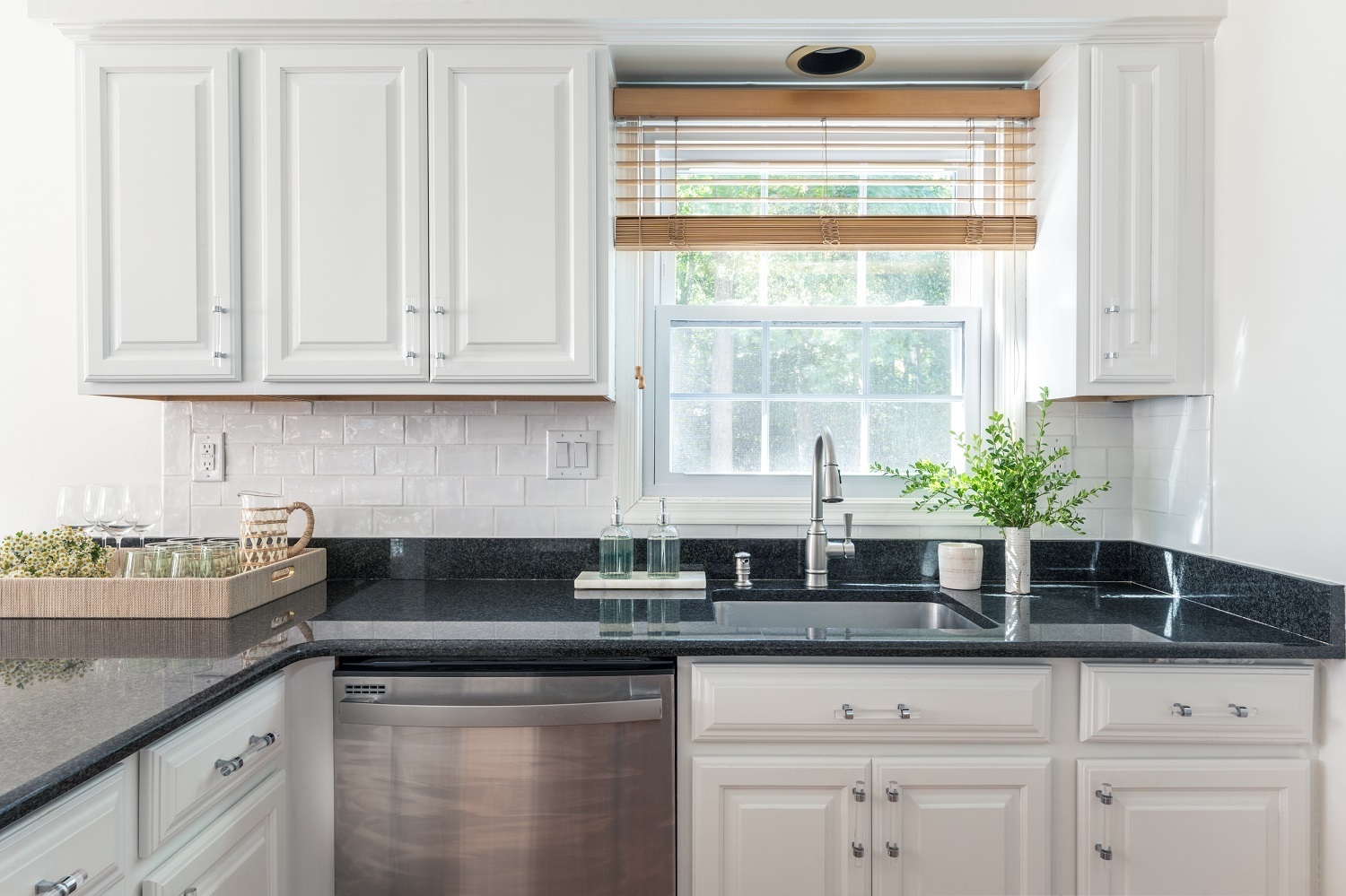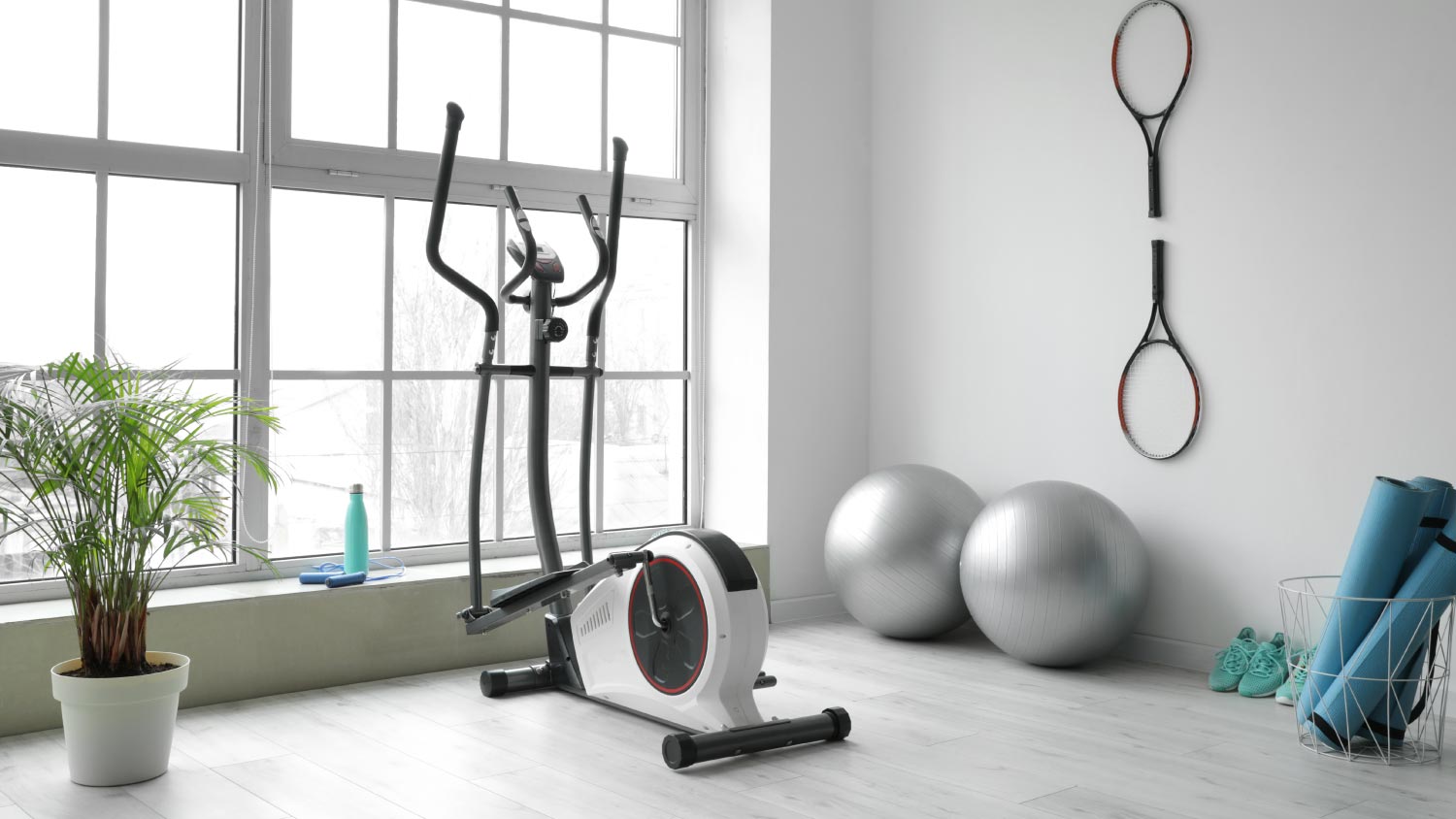How to Measure a Kitchen for Projects and Remodels
Get a leg up on your kitchen remodel with these easy prep steps


- Tape measure (minimum 25 feet)
- Straight edge or ruler
- Graph paper
- Pencil
There are many reasons you might find yourself wanting to measure your kitchen. Maybe you’re planning a full-on kitchen remodel and need to know what appliances you can fit and where. Or perhaps you’re painting the walls and want to get an idea of the room length, ceiling height, and overall surface area so you can budget and pick up the supplies you need. Whatever your reasoning, here’s a primer on how to measure a kitchen and everything you’ll need to do the job right.
5 Steps to Measuring a Kitchen
Learning how to measure a kitchen isn’t particularly difficult; however, you’ll want to take these tips into account to maximize your efficiency and minimize the hassle.
Mock Up Your Kitchen on Graph Paper

Before you start taking measurements, use a ruler to draw the outside edge, or perimeter, of your kitchen on a piece of graph paper. Scaling and perfection of the lines aren’t crucial in your drawing because you’ll add actual measurements. Pretend that you’re looking at the room from a bird’s-eye view to create a set of rough kitchen plans that will make sense once you add more details like a refrigerator or dishwasher.
If drawing isn’t in your skillset, or you simply feel frustrated by the prospect, a local kitchen designer can produce professional renderings.
Note All Outlets and Appliances
Make notations on your graph paper of every appliance, electrical outlet, light switch, or lighting fixture involved in your kitchen design or renovation project. This will help visualize how far you’ll need to take the electrical side of the project and if you’ll need to hire an electrician in your area for the work.
Draw in Windows and Entrances
Marking off the kitchen windows, doors, and hallway entrances is an important step to make sure you take every factor into account when doing a remodeling project. Another helpful visualization tool: Measure clockwise and draw a quarter circle line in the direction any door will open to notate where you need to leave room for clearance. This could impact a kitchen island extension, for example, or interfere with a kitchen cabinet.
Measure the Room
 Photo: Angelov / Adobe Stock
Photo: Angelov / Adobe StockMeasuring a kitchen is a job best accomplished with two people—with one holding the base of the tape measure and the other extending it—as a tape measure can be a finicky tool. You’ll want to start from one corner and go around the space, taking horizontal measurements that span the entire length and width of the kitchen’s outer edges. Once you’ve got those dimensions, go back and mark out distances between door openings, windows, and cabinetry until you have a complete top-down picture of the room.
If you’re measuring for countertops, you’ll want to note where the old sink is and where you plan to put your new kitchen sink based on the plumbing and how you will mount the faucets. Are you adding wall cabinets, just base cabinets, or both? Measuring for new cabinets requires even more detail. In addition to plotting the basic layout for the boxes, you’ll need to figure out the type of door and drawer front you’re going to install and where each hinge, knob, and piece of hardware will fall on the cabinet doors.
Double-Check Your Measurements
You'll want to double-check that each measurement is correct before you place any orders for materials, such as flooring or a new variety of backsplash tile. Measuring a third time never hurts either, just to be 100% sure of your square footage. Once you have that added level of assurance, you’ll still want to add a margin of error—usually 10%—and order more material than you need to account for any kitchen remodeling mistakes and cutting waste.
Be Nimble
As you get into the advanced stages of designing your kitchen, priorities will likely change. Maybe your kitchen designer points out a potential upgrade that you just have to do, or perhaps you realize you need to move a wall or lighting fixture to make room for a central island and seating area. Maintaining a flexible approach to a kitchen remodel—and for any home renovation project, for that matter—will help you immensely in the end.
DIY Measuring a Kitchen vs. Hiring a Pro
Measuring your kitchen is a home remodeling task you can do yourself. However, suppose you’re hiring a cabinet maker near you to build the bones of your kitchen or a flooring contractor to install hardwood or tile. In that case, they’ll come out to your home and make final measurements before building or installing anything semipermanent.





- Bathroom Remodeling
- Kitchen Remodeling
- Shower Installation
- Stair Installers
- Bathtub Installation
- Shower Door Installers
- Kitchen Design
- Bathroom Design Companies
- Storm Shelter Builders
- Pre-Made Cabinets
- Kitchen Refacing
- Bathtub Replacement
- Ceiling Tile Installation
- Suspended Ceiling Companies
- Residential Designers
- Stair Builders
- Remodel Designers
- Shower Enclosures
- Home Renovations
- Kitchen Renovations
- Garage Remodeling
- Grab Bar Installation
- Walk-In Tub Installers
- Tub to Shower Conversion
- Balcony Contractors









